 Computer Tutorials
Computer Tutorials
 Computer Knowledge
Computer Knowledge
 The USB disk can be recognized on the back of the computer
The USB disk can be recognized on the back of the computer
The USB disk can be recognized on the back of the computer
php editor Baicao reminds everyone that sometimes when we use a U disk to connect to the computer, we may encounter a situation where the USB interface on the back of the computer cannot recognize the U disk. This problem may be caused by a variety of reasons, such as loose interfaces, driver issues, etc. Today, let’s discuss the solution to this problem and help you solve this trouble easily.
U disk is the most commonly used mobile storage device. I don’t know, after you connect the U disk to the computer, when you need to remove it, do you just unplug it directly?
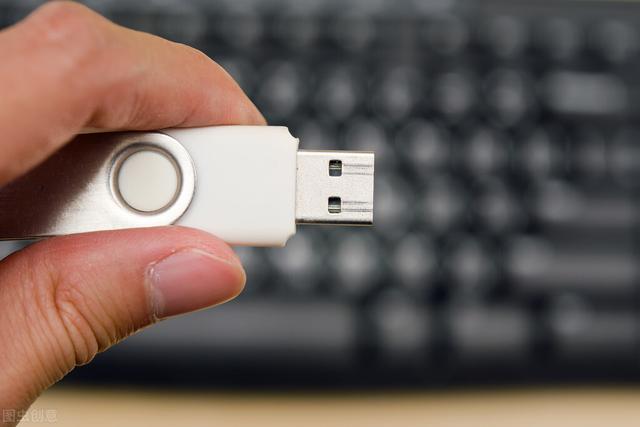
To be honest, when I first started using the U disk, Dabaicai also honestly clicked on the U disk safe ejection option.

However, when I got anxious and the pop-up failed again, I basically pulled out the USB disk out of frustration~
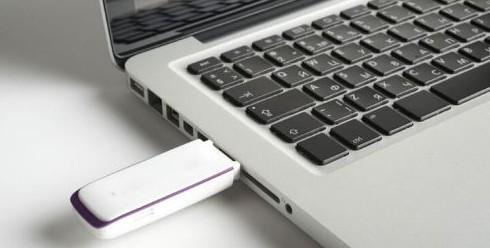
After that, Dabaicai also tried Unplugging it directly after a few times seems to have no effect. So is it really that important to safely eject the USB flash drive?
Here, let’s briefly talk about why there is a “safe eject” option?
In early Windows systems, in order to improve the reading and writing speed of external storage devices, Microsoft would enable caching for these devices.

In short, when you copy data to a USB flash drive, Windows will first write the data to the faster cache and then write it to the storage device. This will cause the computer to first "Copy successful" is displayed.
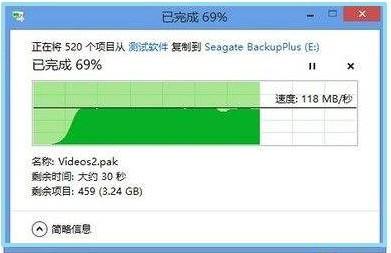
The reality is that if your cache has not been completely written, if you forcefully remove the USB flash drive, you will be fooled by Windows.
After using a USB flash disk, problems such as data loss, unrecognizable device, and need to format or repair sectors may occur.
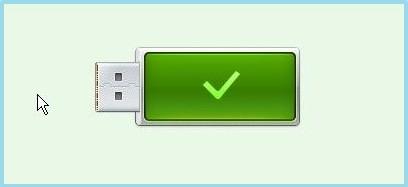
Therefore, in order to avoid data suddenly losing its target in the cache, which may cause Windows to slow down and other consequences, Microsoft has added a safe pop-up function.
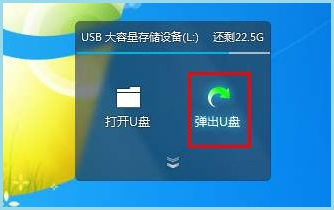
Purely from the nature point of view, safe ejection is just a detection process to check whether the data in the external storage is being read or written. It has little technical content. Strictly speaking, it is different from direct plugging and unplugging. Very small.

However, the quality of previous USB flash drives varied. If your USB flash drive manufacturer did not follow the protocol when manufacturing it, that is to say, USB naturally supports hot swapping, which allows users to operate without shutting down the system. Remove the hardware without cutting off the power supply.

The consequence of casual plugging and unplugging is that the U disk hardware is easily damaged, and eventually the U disk is scrapped~
There is a reason why U disks from serious manufacturers are expensive~

Nowadays, U disks are developing rapidly, the reading and writing speed has been increasing, and most U disks support hot swapping.

Microsoft has finally realized that a change is needed. After version 1809 of Win10, all Windows computers will support U disk hot swapping by default.
So, in addition to reading and writing operations, the external U disk can be removed at will by default! The previous statement of caching will no longer exist. If the data is said to have been transferred, it has been transferred.

It should be noted that Microsoft’s technical improvements this time are only for U disks, so if you are connecting an external mechanical hard disk, it will be safer to “safely exit” (due to the structure of the mechanical hard disk) .

However, there is also a saying that Microsoft's "Quick Delete" sacrifices the performance of the U disk to ensure the safety of the U disk. When the U disk is inserted, Windows cannot cache the disk write operation. This can be understood as Less performant and slower, but can be plugged and unplugged at will.
Recently, many friends have reported that the U disk transfer speed is slow, precisely because of this reason.

Therefore, some friends still insist on Microsoft’s previous settings for the U disk, which prefers the “better performance” mode. The file opening speed is fast and the transfer speed is also fast. The U disk is on standby at any time, but it must be clicked. "Safely Remove USB Hardware" will stop the USB drive from working.
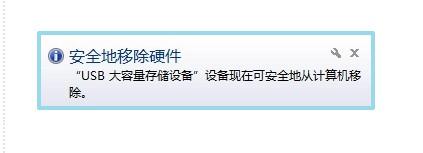
Of course, you are free to choose the method to insert and remove the USB flash drive, but the current version of the window system has modified the settings.
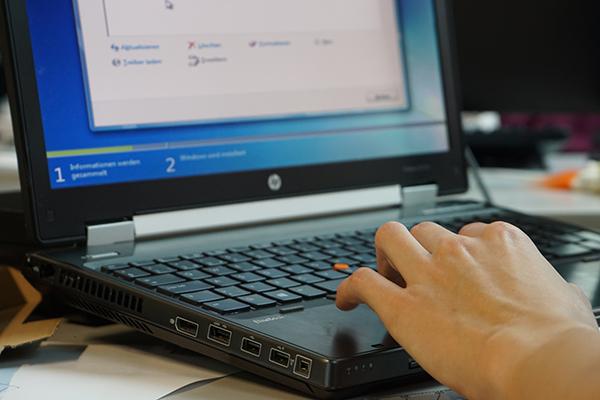
If you want to manually remove the hardware instead of plugging and unplugging it directly, you can still set it up:
1. Insert the U disk into the computer, right-click the U disk, Select Properties
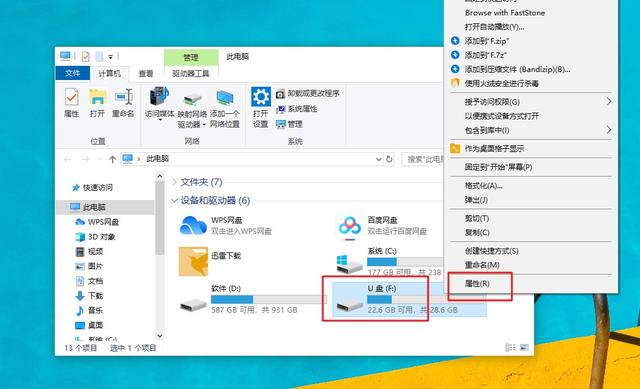
2. On the page, click to switch the "Hardware" tab, and then click "Properties"
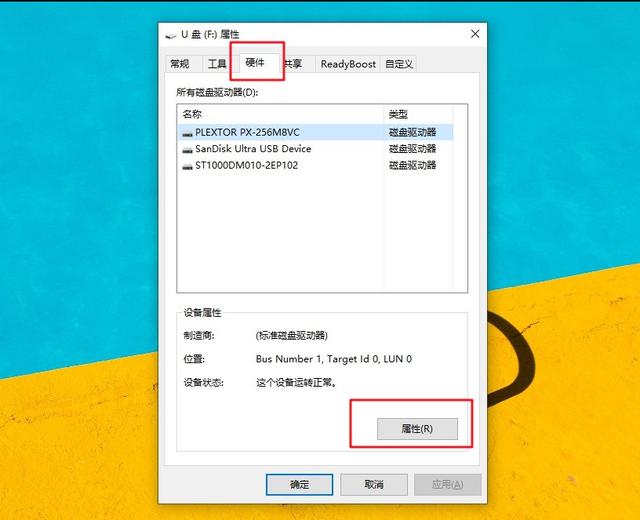
3. Finally, you can set the policy to enable, Click "OK" to save the changes, and then you need to "Safely Remove Hardware"

This time about the issue that the U disk must be ejected safely and cannot be plugged in or out at will. The answer given by Microsoft is, Are you still satisfied?
The above is the detailed content of The USB disk can be recognized on the back of the computer. For more information, please follow other related articles on the PHP Chinese website!

Hot AI Tools

Undresser.AI Undress
AI-powered app for creating realistic nude photos

AI Clothes Remover
Online AI tool for removing clothes from photos.

Undress AI Tool
Undress images for free

Clothoff.io
AI clothes remover

Video Face Swap
Swap faces in any video effortlessly with our completely free AI face swap tool!

Hot Article

Hot Tools

Notepad++7.3.1
Easy-to-use and free code editor

SublimeText3 Chinese version
Chinese version, very easy to use

Zend Studio 13.0.1
Powerful PHP integrated development environment

Dreamweaver CS6
Visual web development tools

SublimeText3 Mac version
God-level code editing software (SublimeText3)

Hot Topics
 How to use sql datetime
Apr 09, 2025 pm 06:09 PM
How to use sql datetime
Apr 09, 2025 pm 06:09 PM
The DATETIME data type is used to store high-precision date and time information, ranging from 0001-01-01 00:00:00 to 9999-12-31 23:59:59.99999999, and the syntax is DATETIME(precision), where precision specifies the accuracy after the decimal point (0-7), and the default is 3. It supports sorting, calculation, and time zone conversion functions, but needs to be aware of potential issues when converting precision, range and time zones.
 How to create oracle database How to create oracle database
Apr 11, 2025 pm 02:36 PM
How to create oracle database How to create oracle database
Apr 11, 2025 pm 02:36 PM
To create an Oracle database, the common method is to use the dbca graphical tool. The steps are as follows: 1. Use the dbca tool to set the dbName to specify the database name; 2. Set sysPassword and systemPassword to strong passwords; 3. Set characterSet and nationalCharacterSet to AL32UTF8; 4. Set memorySize and tablespaceSize to adjust according to actual needs; 5. Specify the logFile path. Advanced methods are created manually using SQL commands, but are more complex and prone to errors. Pay attention to password strength, character set selection, tablespace size and memory
 How to update the image of docker
Apr 15, 2025 pm 12:03 PM
How to update the image of docker
Apr 15, 2025 pm 12:03 PM
The steps to update a Docker image are as follows: Pull the latest image tag New image Delete the old image for a specific tag (optional) Restart the container (if needed)
 Summary of phpmyadmin vulnerabilities
Apr 10, 2025 pm 10:24 PM
Summary of phpmyadmin vulnerabilities
Apr 10, 2025 pm 10:24 PM
The key to PHPMyAdmin security defense strategy is: 1. Use the latest version of PHPMyAdmin and regularly update PHP and MySQL; 2. Strictly control access rights, use .htaccess or web server access control; 3. Enable strong password and two-factor authentication; 4. Back up the database regularly; 5. Carefully check the configuration files to avoid exposing sensitive information; 6. Use Web Application Firewall (WAF); 7. Carry out security audits. These measures can effectively reduce the security risks caused by PHPMyAdmin due to improper configuration, over-old version or environmental security risks, and ensure the security of the database.
 What types of files are composed of oracle databases?
Apr 11, 2025 pm 03:03 PM
What types of files are composed of oracle databases?
Apr 11, 2025 pm 03:03 PM
Oracle database file structure includes: data file: storing actual data. Control file: Record database structure information. Redo log files: record transaction operations to ensure data consistency. Parameter file: Contains database running parameters to optimize performance. Archive log file: Backup redo log file for disaster recovery.
 How to delete all data from oracle
Apr 11, 2025 pm 08:36 PM
How to delete all data from oracle
Apr 11, 2025 pm 08:36 PM
Deleting all data in Oracle requires the following steps: 1. Establish a connection; 2. Disable foreign key constraints; 3. Delete table data; 4. Submit transactions; 5. Enable foreign key constraints (optional). Be sure to back up the database before execution to prevent data loss.
 What are the common misunderstandings in CentOS HDFS configuration?
Apr 14, 2025 pm 07:12 PM
What are the common misunderstandings in CentOS HDFS configuration?
Apr 14, 2025 pm 07:12 PM
Common problems and solutions for Hadoop Distributed File System (HDFS) configuration under CentOS When building a HadoopHDFS cluster on CentOS, some common misconfigurations may lead to performance degradation, data loss and even the cluster cannot start. This article summarizes these common problems and their solutions to help you avoid these pitfalls and ensure the stability and efficient operation of your HDFS cluster. Rack-aware configuration error: Problem: Rack-aware information is not configured correctly, resulting in uneven distribution of data block replicas and increasing network load. Solution: Double check the rack-aware configuration in the hdfs-site.xml file and use hdfsdfsadmin-printTopo
 What are the oracle11g database migration tools?
Apr 11, 2025 pm 03:36 PM
What are the oracle11g database migration tools?
Apr 11, 2025 pm 03:36 PM
How to choose Oracle 11g migration tool? Determine the migration target and determine the tool requirements. Mainstream tool classification: Oracle's own tools (expdp/impdp) third-party tools (GoldenGate, DataStage) cloud platform services (such as AWS, Azure) to select tools that are suitable for project size and complexity. FAQs and Debugging: Network Problems Permissions Data Consistency Issues Insufficient Space Optimization and Best Practices: Parallel Processing Data Compression Incremental Migration Test





